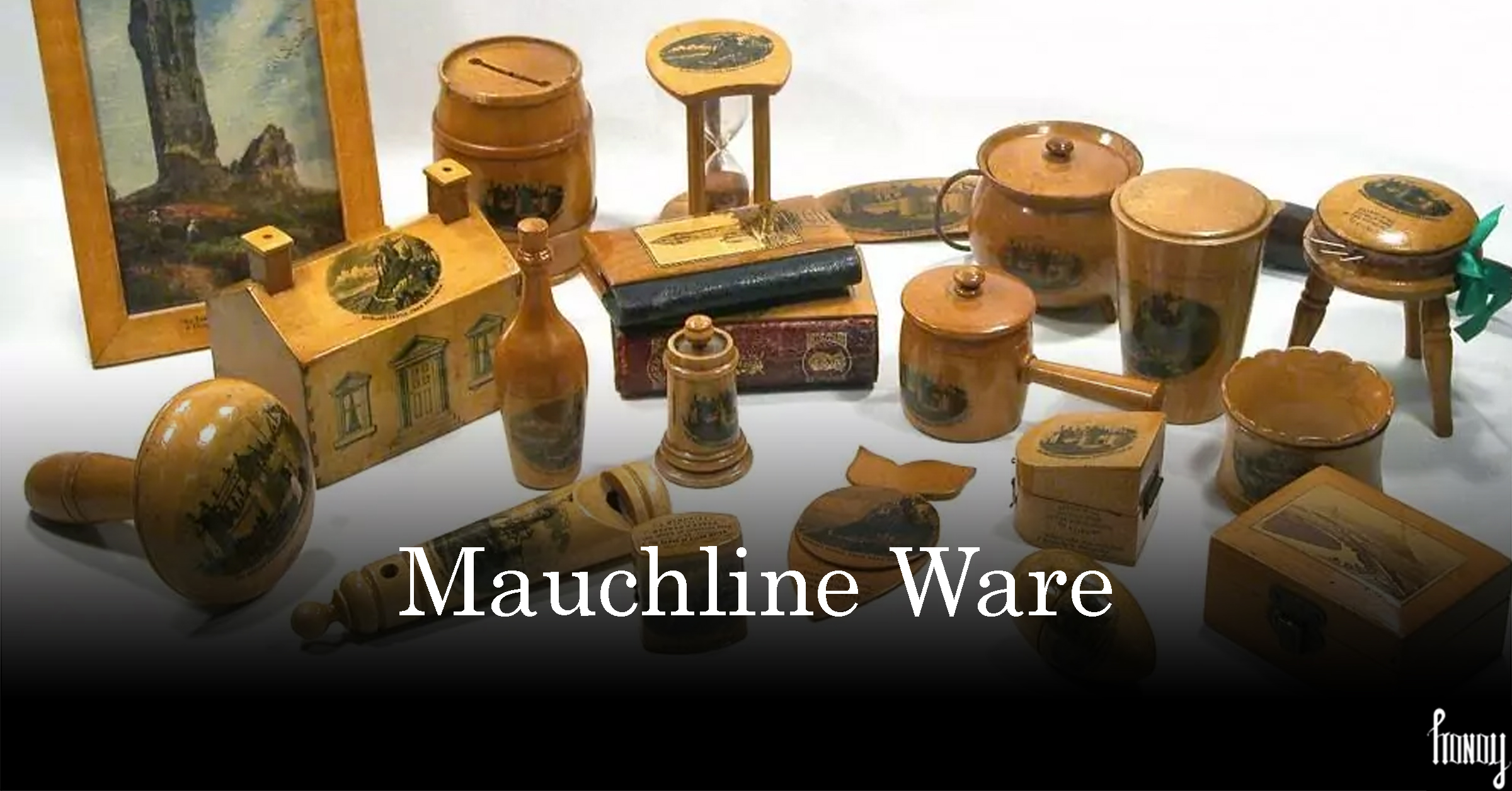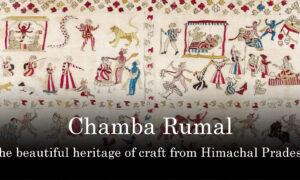Introduction to Mauchline Ware
Scotland, the land of scenic landscapes is known for world class whisky, bagpipes, and kilts. But there is a hidden gem in the heart of this culturally and historically rich nation, the ‘Mauchline Ware’. A unique form of decorative wooden souvenir, that is made only in this part of the world. Mauchline ware has long catered to the Victorian era’s fascination with souvenirs and keepsakes. Today, Mauchline ware remains a cherished collectible, celebrated for its historical significance and artistic merit.
In this blog, we will look into the history, craftsmanship, and cultural importance of Mauchline ware. How this ancient craft of decorative woodware has survived, thrived, and captured the charm of Scottish scenery and cultural symbol.
Origins and History
The origins of the Mauchline ware can be traced to the 19th century Scottish village of Ayrshire. This tiny village was the epicentre of the thriving industry of the beautifully crafted wooden items. Originally, this kind of work was limited to only the local craftsmen, but as it grew in popularity, this industry tool on a mammoth size with factories getting into mass production.
In the 19th century, the W & A Smith. Mauchline company, founded by brothers William and Alexander Smith, played a pivotal role in the expansion of this wooden craft’s business. Under its leadership, many items such as snuff boxes, needle cases, and tea caddies became popular souvenirs, especially among tourists visiting Scotland. Such was its popularity that these products now came to be known as the ‘Mauchline Ware’.
Craftsmanship and Techniques
Highly skilled artisans produce the finest Mauchline ware from Sycamore Wood. Primarily used in creating Mauchline ware, the Sycamore wood is ideal and is used for its fine grain, durability, and smooth surface, making it ideal for detailed decorative work. Once finished, the finishing touches were given with multiple layers lacquer or varnish. This was done to ensure the to protect the delicate designs and also to give the products a glossy, attractive finish.
A key historical development in the evolution of Mauchline ware was the introduction of transfer printing technique, around 1820. This innovative method allowed intricate images, often of Scottish landscapes, landmarks, and cultural icons, to be applied to the wooden surfaces. These designs were first printed onto a special paper and then transferred onto the wood, which was subsequently varnished to create a durable and attractive finish. The high quality and detailed nature of these prints set Mauchline ware apart from other decorative wood products of the time.
Over time, the Mauchline ware industry introduced several variations and innovations. For instance, some pieces featured tartan designs, which were created using a labor-intensive painting process. Later in the 19th century, photographic images became popular. This involved applying real photographs onto the wood, creating personalized and highly detailed keepsakes. The production process remained labor-intensive and required a high level of skill, particularly in ensuring the perfect application of the transfer prints and achieving a flawless varnish finish.
Designs and Themes
Mauchline ware have always had a wide array of designs and themes running across the entire gamut of the products that come. Over the centuries, these have only further expanded. Following are few of the categories under which these thematic influences can be classifies.
- Scottish Landscapes and Landmarks – often depicting the historical landmarks of Scotland like Edinburgh Castle, Loch Lomond, and the Isle of Skye along with the Scottish landscape.
- Tartan Patterns – The cultural symbol of Scottish heritage, the tartan pattern is also used as a common theme.
- Floral and Natural Motifs – Floral designs and natural motifs were common, adding a touch of elegance and beauty to the pieces. These designs often included flowers, leaves, and other botanical elements.
- Commemorative Designs – Mauchline ware often commemorated significant events and occasions. Items were produced to mark royal events, such as coronations, jubilees, and other celebrations. Many pieces were made as souvenirs for specific events or locations, making them cherished mementos for travelers.
- Photographic Images – In the late 19th century, the introduction of photographic images added a new dimension to Mauchline ware. These pieces featured real photographs, often of local scenes, famous personalities, or personal portraits.
Collecting and Preservation
Despite its popularity, the Mauchline ware industry began to decline in the early 20th century due to changing tastes and competition from mass-produced goods. The final blow came with the devastating fire at the W. & A. Smith factory in 1933, which destroyed much of the production capability.
Today, Mauchline ware is highly regarded by collectors and historians alike for its unique combination of artistry and craftsmanship. It offers a fascinating glimpse into 19th-century Scottish culture and the ingenuity of its makers, preserving the charm and heritage of a bygone era.
With its rich history and unique craftsmanship, Mauchline ware is celebrated in various notable collections, museums, and exhibitions worldwide. These venues provide enthusiasts and collectors with the opportunity to appreciate and study this fascinating form of decorative woodware. Below are the few of the museums that house extensive and rare collections of Mauchline ware:
- National Museum of Scotland (Edinburgh, Scotland)
- V&A Museum (Victoria and Albert Museum, London, England)
- Baird Institute (Cumnock, Scotland)
- North Ayrshire Heritage Centre (Saltcoats, Scotland)
- The Dick Institute (Kilmarnock, Scotland)
Conclusion
Mauchline ware stands as a testament to the rich history, exquisite craftsmanship, and enduring cultural significance of Scotland’s decorative arts. Throughout its history, Mauchline ware has reflected the evolving tastes and interests of society, incorporating a diverse range of themes such as Scottish landscapes, tartan patterns, floral motifs, and commemorative designs.
The enduring appeal of Mauchline ware lies not only in its aesthetic beauty but also in its role as a cherished part of Scotland’s cultural heritage. These wooden artifacts offer a window into the country’s history, traditions, and artistic achievements, serving as tangible reminders of a bygone era. Whether as souvenirs for travelers, mementos of special occasions, or objects of artistic admiration, Mauchline ware continues to hold a special place in the hearts of enthusiasts and collectors alike.
As custodians of this cultural legacy, it is vital that we recognize the importance of preserving and celebrating the artistry of Mauchline ware for future generations. By safeguarding these precious artifacts, sharing their stories, and fostering appreciation for their craftsmanship, we ensure that the legacy of Mauchline ware endures as a source of inspiration and wonder for years to come. In doing so, we honor the ingenuity, creativity, and craftsmanship of the artisans who brought these exquisite wooden treasures to life, preserving a unique chapter in Scotland’s cultural tapestry for generations to come.
This blog is a small contribution in the honor of this cherished artform. Do let us know your thoughts on this and if we left out anything.




























